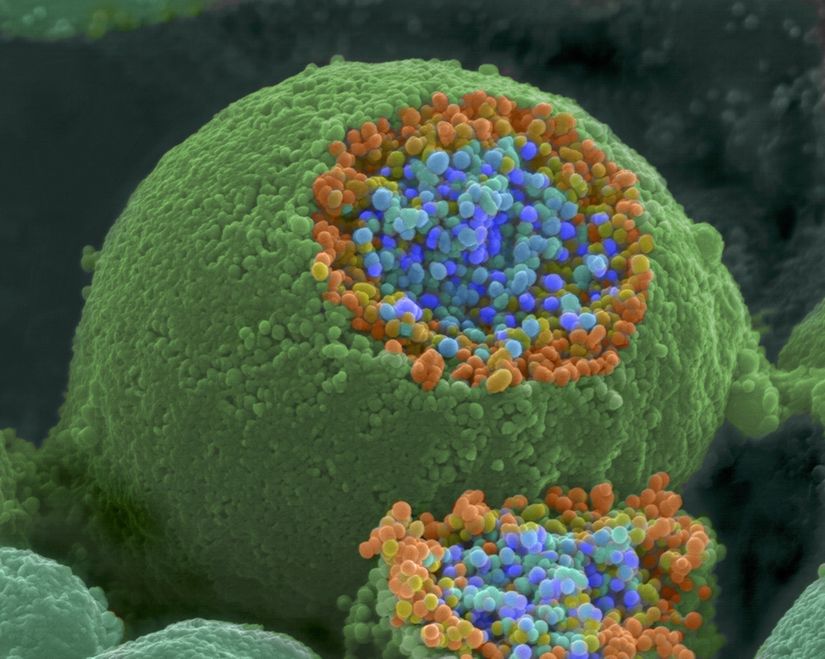Signal (Impulse) Transmission in Neurons: What is a Synapse? How Fast Are Neurons?
How Fast Do Electrochemical Signals Transmit in Neurons?
 The Great Courses Daily
The Great Courses Daily
- Blog Yazısı
Neurons are not all the same. The structure of each is specialized according to the place where it will work. However, it is possible to categorize these neurons according to their connections and structures. For instance, some neurons are physically connected to each other and transmissions from these regions can be extremely fast; in many other places there is a gap (synapse) between the nerves and this gap is filled with chemicals, where signal transmissions is slowed down. Some interneuron connections may be in the form of a mixture of these. In addition, we can divide neurons into 2 groups according to whether they are surrounded by an oily chemical called myelin or not. Myelin acts as an insulator increasing the velocity of transmission. Therefore, the transmission velocity in myelinated neurons can be extremely high.
What is a Synapse?
Synapses are spaces between neurons in the nervous system. Although it essentially stands as a "gap", it is used quite actively and is the venue for different reactions of many chemicals and receptors as electrical signals (known as "impulses" in neuroscience) are transmitted. Typically, when a signal reaches the end of the cell, the post-synaptic receptors, neurons pour the chemicals they contain into a series of post-reaction synapses. Through these chemicals, electrical signals, that is, signals that will do work in the brain or in the target area, can be transferred from one nerve to another.

How Fast Is Transmission in Neurons?
The velocity of transmission in neurons also determines how quickly the information carried by those neurons neurons is perceived in the brain. That's why we feel pain slowly, but we can react to a pinprick in a matter of milliseconds. Because while signal transmission on unmyelinated neurons neurons is 50 centimeters per second, it is up to 120 meters per second on myelinated. In other words, the myelin sheath increases nerve transmission 240 times. Considering the average human body is 1.7 meters, a signal from your toes to your brain can be transmitted in a few milliseconds.
So we don't actually react as soon as pain comes; although our reactions may seem instantaneous. It is possible to see this in slow motion cameras. If you stick a needle in someone's body, the individual will go on with his life for a few milliseconds as if nothing had happened. During this time, the signal is transmitted, the brain processes and generates the response, which is transmitted to the muscles. All of this happens thanks to very high-speed chemical reactions and the enzymes of these reactions. After that few milliseconds of processing time, the muscles contract according to the signals coming from the brain and the individual shows his reactions to pain.
Signal Transmission Velocities
If we take a look at the signal transmission velocities in the nerve fibers, we see that we can divide the nerves into several categories. For example, we examine motor nerves in two different categories:
- α-Type Nerves: Myelinated. They have a diameter of 13-20 µm. They transmit at a speed of 80-120 meters per second and are usually located outside the muscle.
- γ Type Nerves: Myelinated. They have a diameter of 5-8 µm. They transmit at a speed of 4-24 meters per second and are usually located intramuscularly.
However, there are not only motor nerves in our body. It is possible to examine nerve cells belonging to different sensory organs under different types:
- Type-Ia Nerves: It is myelinated and is an α-type nerve according to the Erlanger-Gasser Categorization System. Therefore, they have a diameter of 13-20 µm. They transmit at a speed of 80-120 meters per second and transmit information about the movements of the body. These nerves are called proprioceptors.
- Type-Ib Nerves: They are myelinated and are α-type nerves according to the Erlanger-Gasser Categorization System. Therefore, they have a diameter of 13-20 µm. They transmit at a speed of 80-120 meters per second and transmit information about the amount of contraction of the muscles. These nerves work together with the Golgi tendon organ.
- Type-II Nerves: It is myelinated and is Aβ type nerve according to the Erlanger-Gasser Categorization System. These nerves have a diameter of 6-12 µm. They transmit at a speed of 33-75 meters per second and transmit information about the axes of the muscles. At the same time, all the mechanoreceptors in our skin are in this category.
- Type-III Nerves: They have a thin myelin layer and are type Aδ nerve according to the Erlanger-Gasser Categorization System. These nerves have a diameter of 1-5 µm. They transmit at a speed of 3-30 meters per second. They are located on open nerve endings in areas where touch and pressure are felt. Also, receptors sensitive to pain and cold are of this type.
- Type-IV Nerves: They are unmyelinated and are type C nerves according to the Erlanger-Gasser Categorization System. These nerves have a diameter of 0.2-1.5 µm. They transmit at a speed of 0.5-2 meters per second. Temperature and some pain receptors are of this type.
- 1
- 0
- 0
- 0
- 0
- 0
- 0
- 0
- 0
- 0
- 0
- 0
- people.eku.edu. Human Physiology - Neurons & The Nervous System. (8 Nisan 2022). Alındığı Tarih: 8 Nisan 2022. Alındığı Yer: people.eku.edu | Arşiv Bağlantısı
- G. Elert. Speed Of Nerve Impulses - The Physics Factbook. (8 Nisan 2022). Alındığı Tarih: 8 Nisan 2022. Alındığı Yer: hypertextbook | Arşiv Bağlantısı
- Wikipedia. Aspect Of Nerve Conduction Studies. (25 Ocak 2006). Alındığı Tarih: 8 Nisan 2022. Alındığı Yer: Wikipedia | Arşiv Bağlantısı
Evrim Ağacı'na her ay sadece 1 kahve ısmarlayarak destek olmak ister misiniz?
Şu iki siteden birini kullanarak şimdi destek olabilirsiniz:
kreosus.com/evrimagaci | patreon.com/evrimagaci
Çıktı Bilgisi: Bu sayfa, Evrim Ağacı yazdırma aracı kullanılarak 02/12/2025 16:37:42 tarihinde oluşturulmuştur. Evrim Ağacı'ndaki içeriklerin tamamı, birden fazla editör tarafından, durmaksızın elden geçirilmekte, güncellenmekte ve geliştirilmektedir. Dolayısıyla bu çıktının alındığı tarihten sonra yapılan güncellemeleri görmek ve bu içeriğin en güncel halini okumak için lütfen şu adrese gidiniz: https://evrimagaci.org/s/11639
İçerik Kullanım İzinleri: Evrim Ağacı'ndaki yazılı içerikler orijinallerine hiçbir şekilde dokunulmadığı müddetçe izin alınmaksızın paylaşılabilir, kopyalanabilir, yapıştırılabilir, çoğaltılabilir, basılabilir, dağıtılabilir, yayılabilir, alıntılanabilir. Ancak bu içeriklerin hiçbiri izin alınmaksızın değiştirilemez ve değiştirilmiş halleri Evrim Ağacı'na aitmiş gibi sunulamaz. Benzer şekilde, içeriklerin hiçbiri, söz konusu içeriğin açıkça belirtilmiş yazarlarından ve Evrim Ağacı'ndan başkasına aitmiş gibi sunulamaz. Bu sayfa izin alınmaksızın düzenlenemez, Evrim Ağacı logosu, yazar/editör bilgileri ve içeriğin diğer kısımları izin alınmaksızın değiştirilemez veya kaldırılamaz.








